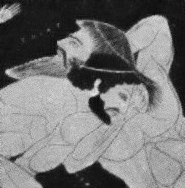Berbers
[41] Berber tribes remained powerful political forces and founded new ruling dynasties in the 10th and 11th centuries, such as the Zirids, Hammadids, various Zenata principalities in the western Maghreb, and several Taifa kingdoms in al-Andalus, and empires of the Almoravids and Almohads.A Neolithic society, marked by domestication and subsistence agriculture and richly depicted in the Tassili n'Ajjer paintings, developed and predominated in the Saharan and Mediterranean region (the Maghreb) of northern Africa between 6000 and 2000 BC (until the classical period).The men who belong to this family of peoples have inhabited the Maghreb since the beginning.As of about 5000 BC, the populations of North Africa were descended primarily from the Iberomaurusian and Capsian cultures, with a more recent intrusion being associated with the Neolithic Revolution.[87] However, the Phoenicians eventually established strategic colonial cities in many Berber areas, including sites outside of present-day Tunisia, such as the settlements at Oea, Leptis Magna, Sabratha (in Libya), Volubilis, Chellah, and Mogador (now in Morocco).[86]: 64–65 Also, due to the Berbero-Libyan Meshwesh dynasty's rule of Egypt (945–715 BC),[88] the Berbers near Carthage commanded significant respect (yet probably appearing more rustic than the elegant Libyan pharaohs on the Nile).In the 5th century BC, Carthage expanded its territory, acquiring Cape Bon and the fertile Wadi Majardah,[91] later establishing control over productive farmlands for several hundred kilometres.This social-cultural interaction in early Carthage has been summarily described: Lack of contemporary written records makes the drawing of conclusions here uncertain, which can only be based on inference and reasonable conjecture about matters of social nuance.The Carthaginians were obliged to withdraw within their walls and were besieged.Yet the Berbers lacked cohesion; and although 200,000 strong at one point, they succumbed to hunger, their leaders were offered bribes, and "they gradually broke up and returned to their homes".Nonetheless, therein they persisted largely unassimilated,[citation needed] as a separate, submerged entity, as a culture of mostly passive urban and rural poor within the civil structures created by Punic rule.Nonetheless, a modern criticism is that the Carthaginians "did themselves a disservice" by failing to promote the common, shared quality of "life in a properly organized city" that inspires loyalty, particularly with regard to the Berbers.Hence arose that universal disaffection, or rather that deadly hatred, on the part of her foreign subjects, and even of the Phoenician dependencies, toward Carthage, on which every invader of Africa could safely count as his surest support.The Roman officials, allegedly due to bribes but perhaps more likely out of a desire to quickly end conflict in a profitable client kingdom, sought to settle the quarrel by dividing Numidia into two parts.The new faith, in its various forms, would penetrate nearly all segments of Berber society, bringing with it armies, learned men, and fervent mystics, and in large part replacing tribal practices and loyalties with new social norms and political idioms.A further Arabization of the region was in large part due to the arrival of the Banu Hilal, a tribe sent by the Fatimids of Egypt to punish the Berber Zirid dynasty for having abandoned Shiism.But when the seat of the caliphate moved from Medina to Damascus, the Umayyads (a Muslim dynasty ruling from 661 to 750) recognized that the strategic necessity of dominating the Mediterranean dictated a concerted military effort on the North African front.Abu al-Muhajir Dinar, Uqba's successor, pushed westward into Algeria and eventually worked out a modus vivendi with Kusaila, the ruler of an extensive confederation of Christian Berbers.Governors appointed by the Umayyad caliphs ruled from Kairouan, capital of the new wilaya (province) of Ifriqiya, which covered Tripolitania (the western part of modern Libya), Tunisia, and eastern Algeria.After losing the initial battle near Cordoba,[111]: 124–125 Yusuf fled to Mérida, where he raised a large Berber army, with which he marched on Seville, but was defeated by forces loyal to Abd ar-Rahman.[112]: 37 New waves of Berber settlers arrived in al-Andalus in the 10th century, brought as mercenaries by Abd ar-Rahman III, who proclaimed himself caliph in 929, to help him in his campaigns to restore Umayyad authority in areas that had overthrown it during the reigns of the previous emirs.[112]: 170 Al-Hakam II sent Muhammad Ibn Abī ‘Āmir to north Africa in 973–974 to act as qadi al qudat (chief justice) to the Berber groups that had accepted Umayyad authority.Ibn Abī ‘Āmir was treasurer of the household of the caliph's wife and children, director of the mint at Madinat al-Zahra, commander of the Cordoba police, and qadi of the frontier.[112]: 198 It was said that Sanchuelo ordered anyone attending his court to wear Berber turbans, which Roger Collins suggests may not have been true, but shows that hostile anti-Berber propaganda was being used to discredit the sons of al-Mansur.Ibn Idhari said that the installation of Sulayman in 1013 was the moment when "the rule of the Berbers began in Cordoba and that of the Umayyads ended, after it had existed for two hundred and sixty eight years and forty-three days".[132] During the Algerian War (1954–1962), the FLN and ALN's reorganisation of the country created, for the first time, a unified Kabyle administrative territory, wilaya III, being as it was at the centre of the anti-colonial struggle.It only began to succeed among the greater populace when North African states replaced their European colonial languages with Arabic and identified exclusively as Arabian nations, downplaying or ignoring the existence and the social specificity of Berbers.There is an identity-related debate about the persecution of Berbers by the Arab-dominated regimes of North Africa through both Pan-Arabism and Islamism,[135] their issue of identity is due to the pan-Arabist ideology of former Egyptian president, Gamal Abdel Nasser.[187] Since the 1970s,[188]: 209 a political movement, initially led by the Kabyles of Algeria, has developed among various parts of the Berber populations of North Africa to promote a collective Amazigh ethnic identity.In Morocco, the largely Berber-inhabited rural valleys and oases of the Atlas and the south are marked by numerous kasbahs (fortresses) and ksour (fortified villages), typically flat-roofed structures made of rammed earth and decorated with local geometric motifs, as with the famous example of Ait Benhaddou.[217][220][221] Likewise, southern Tunisia is dotted with hilltop ksour and multi-story fortified granaries (ghorfa), such as the examples in Medenine and Ksar Ouled Soltane, which are typically built with loose stone bound by a mortar of clay.The amydaz recites improvised poems, often accompanied by drums and a rabab (a one-stringed fiddle), along with a bou oughanim who plays a double clarinet and acts as a clown for the group.

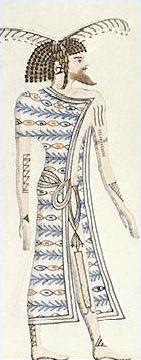
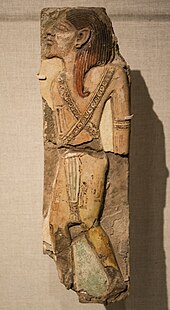



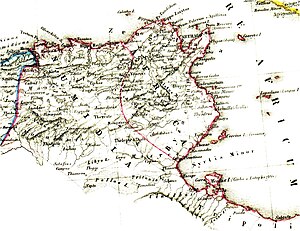




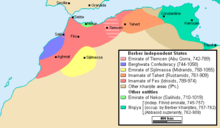

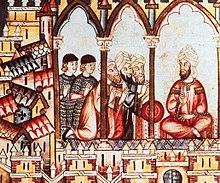



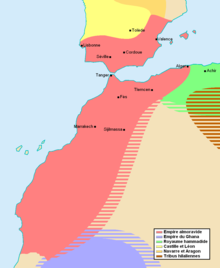












Berbers (disambiguation)Berber ethnic flagMoroccoAlgeriaFranceBelgiumNetherlandsBurkina FasoTunisiaMauritaniaCanadaNorwayIsraelUnited StatesBerber languagesArabicSunni IslamIbadi IslamShia IslamChristianityCatholicismJudaismAfro-Asiatic speakingMediterraneanTifinagh textTifinagh lettersethnic groupsNorth AfricaArabs in the MaghrebAfroasiatic language familyindigenousMaghrebSiwa OasisAncient Egyptian writingsNile ValleySaharaMasaesyliMassyliMusulamiiGaetuliGaramantesNumidiaMauretaniaAltavaAurèsOuarsenisArab conquestsArabizationArabic languageArab cultureArab migrations to the MaghrebBerber tribesZiridsHammadidsZenataal-AndalusAlmoravidsAlmohadsMarinidsZayyanidsHafsidsArabs claiming descent from the Islamic prophet MuhammadKabylesChaouisRifiansFrench colonialBerberismethnic identityNames of the Berber peopleindigenous populationsexonymbarbarianStéphane GsellLeo AfricanuscognateTuaregMauretania CaesariensisTargumIbn KhaldunCanaanNumidianPrehistoric North AfricaHoggarTassili n'AjjerEgyptianLouvre MuseumCave paintingsrock artTadrart AcacusNeolithicdomesticationsubsistence agricultureTifinaghMasinissaGenetic history of North AfricaHistory of North AfricaKabyliaAtlas MountainsCarthaginiansRomansByzantinesVandalsOttoman Turksconquest of North AfricaProto-Berber languagefaienceRamesses IIIGaius Sallustius CrispusGaetuliansIberiaHerculesNumidiansMassinissaAl-FiḥristCanaan, son of HamAbou-Bekr Mohammed es-SouliCasluhimMesraimIberomaurusianCapsianNeolithic RevolutionBronzeUniparental DNAHoloceneTaforaltAfalou
